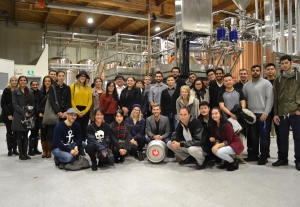How Associations of Products with Numbers in Brand Names Affect Consumer Attitudes
Research presented by: Timucin (“Tim”) Ozcan, Southern Illinois University
Have you ever stopped to think about why some brands use numbers in their names? No? Me neither. And that’s why we should all be thankful that someone out there, in this case Tim, is researching these implications and presenting his findings. Tim’s research looks at how the associations of products with numbers in brand names affect consumer attitudes.
Either we love them, or hate them. Let’s see why.
Think about some popular brands with numbers in the name:
Examples: 3M, 7up, BMW X5
Some of the earliest studies about products with numbers in brand names suggested that familiarity plays an important role for consumers: most of these studies, however were qualitative and lacked empirical evidence.
How numbers work
In China, lucky numbers are favourable in use with brands. For example, the number “8” means luck (compared to the dreaded number “4” which represents death). In most western cultures, number fluency leads to higher brand-liking. For example: Volvo S16, Volvo S29.
What this means to the brand manager is this: “the higher the better”. Consumers will often perceive higher numbers with superior brand attributes, ultimately leading to better perceptions.
Some examples of what that looks like: AMD64 (64 bit processing), Audi A8 (larger car than A4)
So, even though the higher alpha-numerical number could be a worst feature product, consumers don’t care! What, really? It’s true – research suggests that they still perceive them as superior products within the brand family.
Now if I was a brand manager I’d start asking myself this: “If I should use a number, how do I know what number to choose?”
Let’s look at the number “550” – it has been used in so many product categories:
- Mercedes
- Canon Powershot
- Bobcat
- Mustang
- Nikon Coolpix
- Yamaha DVD
- Sony Bluray
- and more…
This may make you want to ask, “what is the association between the brand and the number?” Well, simply put, these associations develop over time. And often, number selection is purely random, and sometimes it’s intentional and reflective of something symbolic.
Random: Levi’s – 301 (arbitrary)
Symbolic: HDTV – 1080 (pixel count)
Let’s look at the theory behind creating strong numeric-brand associations. The special sauce for determining brand-preference seems to point to 3 factors:
- Repeated exposure
- Usage frequency
- Cultural familiarity, personal dispositions, and semantic associations
We can then break-down the preferences into different categories which I summarize this way:
- we like rounded numbers (10’s and 20’s) – which are familiar to us in areas of measurement such as metric, height, weight, volume, length, area
- we like numbers that are factors of 60 – often seen in geometry, astronomy, and other sciences
- we like numbers that are factors of 12’s – time/clocks, calendars, calling things by the “dozen”, some measurements
More often than not, the research conducted showed that numbers ending in “0” and “5” have higher use – we really like round numbers. But sometimes we like numbers that are symbolic and have cultural reference to us. Take condoms for example.
I’m serious – Trojan Condoms. In his study, Tim examined consumers’ attitudes and preference for Trojan Condoms in association with different number sets.
Trojan Condoms -”69” worked well! Of course it would, “69” has cultural reference to sexuality so this makes perfect sense.
But not 86 or 101! Those results were, er, flaccid (excuse the pun).
But guess what? Remember how much we like nice big round numbers? It turns out, Trojan “100” worked even better!
Our favourite numbers often look like this:
One last experiment to highlight.
Everyone knows Baskin Robbins – “31” and Heinz Ketchup – “57”. Those have high familiarity because of repeated exposure. We also know these are symbolic numbers (“31 flavours”) and aren’t random.
So what would happen if we mixed these?
- Baskin Robbins – 57
- Heinz Ketchup – 31
Crazy, I know! Well, it turns out we hate them now. Consumers’ attitudes and preferences were much lower. But now what happens if we throw in our random but well-liked “100” alpha-numeric into the brand name?
- Baskin Robbins – 100
- Heinz Ketchup – 100
We love them again! Consumer preference studies showed that the “100’s” increased the chance of choice and had favourable preference.
So what does all this mean? Multi-context numbers have a real impact on consumer attitudes and preference.

